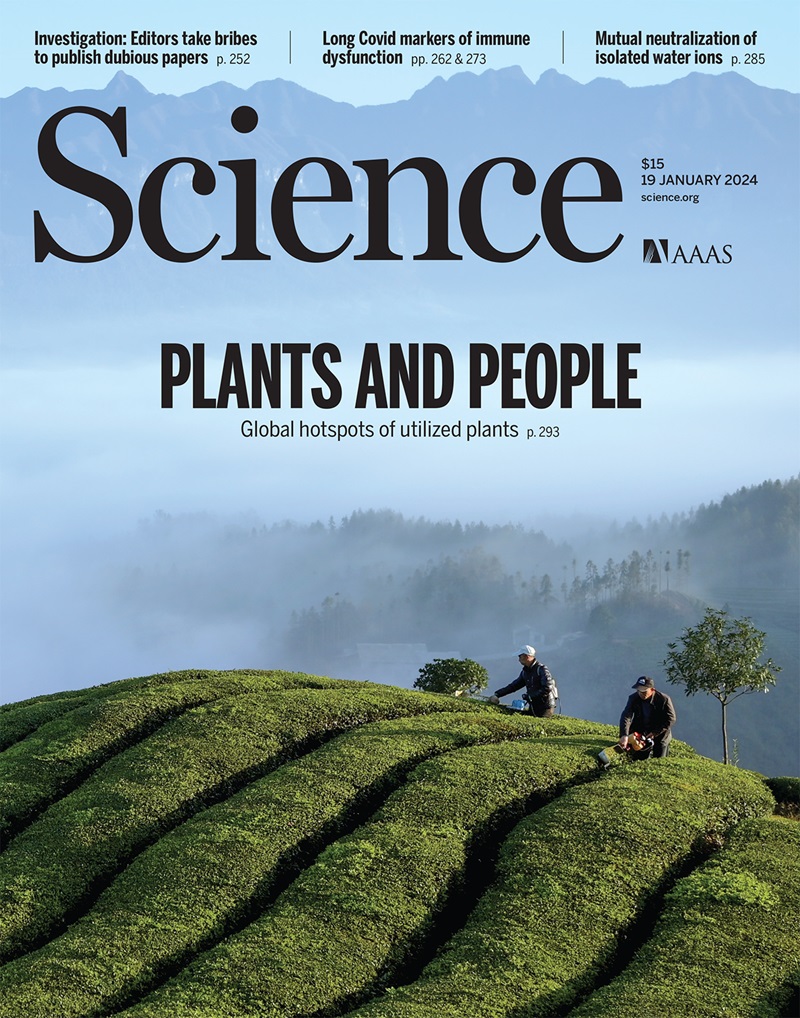Tumor-derived erythropoietin acts as an immunosuppressive switch in cancer immunity
IF 44.7
1区 综合性期刊
Q1 MULTIDISCIPLINARY SCIENCES
引用次数: 0
Abstract
Successful cancer immunotherapy requires a patient to mount an effective immune response against tumors; however, many cancers evade the body’s immune system. To investigate the basis for treatment failure, we examined spontaneous mouse models of hepatocellular carcinoma (HCC) with either an inflamed T cell–rich or a noninflamed T cell–deprived tumor microenvironment (TME). Our studies reveal that erythropoietin (EPO) secreted by tumor cells determines tumor immunotype. Tumor-derived EPO autonomously generates a noninflamed TME by interacting with its cognate receptor EPOR on tumor-associated macrophages (TAMs). EPO signaling prompts TAMs to become immunoregulatory through NRF2-mediated heme depletion. Removing either tumor-derived EPO or EPOR on TAMs leads to an inflamed TME and tumor regression independent of genotype, owing to augmented antitumor T cell immunity. Thus, the EPO/EPOR axis functions as an immunosuppressive switch for antitumor immunity.

肿瘤来源的促红细胞生成素在癌症免疫中起免疫抑制开关的作用
成功的癌症免疫治疗需要患者对肿瘤产生有效的免疫反应;然而,许多癌症逃避了人体的免疫系统。为了研究治疗失败的基础,我们检测了具有炎症T细胞丰富或非炎症T细胞缺失肿瘤微环境(TME)的自发性肝细胞癌(HCC)小鼠模型。我们的研究表明,肿瘤细胞分泌的促红细胞生成素(EPO)决定了肿瘤的免疫类型。肿瘤源性EPO通过与肿瘤相关巨噬细胞(tam)上的同源受体EPOR相互作用,自主产生非炎症性TME。EPO信号通过nrf2介导的血红素耗竭促使tam发挥免疫调节作用。由于增强的抗肿瘤T细胞免疫,去除肿瘤源性EPO或TAMs上的EPOR会导致炎症性TME和肿瘤消退,与基因型无关。因此,EPO/EPOR轴作为抗肿瘤免疫的免疫抑制开关。
本文章由计算机程序翻译,如有差异,请以英文原文为准。
求助全文
约1分钟内获得全文
求助全文
来源期刊

Science
综合性期刊-综合性期刊
CiteScore
61.10
自引率
0.90%
发文量
0
审稿时长
2.1 months
期刊介绍:
Science is a leading outlet for scientific news, commentary, and cutting-edge research. Through its print and online incarnations, Science reaches an estimated worldwide readership of more than one million. Science’s authorship is global too, and its articles consistently rank among the world's most cited research.
Science serves as a forum for discussion of important issues related to the advancement of science by publishing material on which a consensus has been reached as well as including the presentation of minority or conflicting points of view. Accordingly, all articles published in Science—including editorials, news and comment, and book reviews—are signed and reflect the individual views of the authors and not official points of view adopted by AAAS or the institutions with which the authors are affiliated.
Science seeks to publish those papers that are most influential in their fields or across fields and that will significantly advance scientific understanding. Selected papers should present novel and broadly important data, syntheses, or concepts. They should merit recognition by the wider scientific community and general public provided by publication in Science, beyond that provided by specialty journals. Science welcomes submissions from all fields of science and from any source. The editors are committed to the prompt evaluation and publication of submitted papers while upholding high standards that support reproducibility of published research. Science is published weekly; selected papers are published online ahead of print.
 求助内容:
求助内容: 应助结果提醒方式:
应助结果提醒方式:


